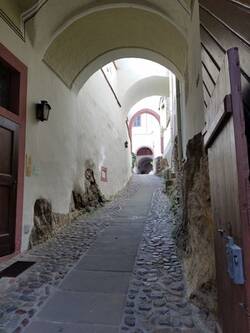Further Media
During the Second World War, the holdings of Dresden’s museums were evacuated to more than forty wartime storage facilities in and outside Dresden: museum cellars, government vaults, castles, palaces and mansions, railway tunnels and mines. These included works that were intended for the “Linz Special Commission” but had not left Dresden. From 1942 onwards, the nearby Schloss Weesenstein proved an ideal location to store them safely and, for the large part, secretly. The castle had come into the possession of Landesverein Sächsischer Heimatschutz, a Saxon heritage protection association, in 1933.
Only a small number of people knew that masterpieces from the Dresden Gemäldegalerie and holdings from the Mathematisch-Physikalischer Salon or the Saxon State Library were stored in this hidden spot in the Müglitz Valley. Almost all the holdings of the Kupferstich-Kabinett were brought to safety at Weesenstein, most of which were stored in the what was known as the “torture chamber”, which was equipped with magnesite flooring, locked doors and electric heating systems. The Special Commission’s records also found their way to Weesenstein, along with some works of art that had not yet been stored in facilities in southern Germany or Austria.
In the final days of the war, the Red Army’s trophy brigades already began to search systematically for repositories of evacuated works. In Weesenstein, the cultural assets were taken over by the Red Army on 10 May 1945. From the end of July 1945, thousands of works – permanent museum holdings, stored private collections and works that had been seized as a result of Nazi persecution – were shipped off to the Soviet Union. Most were returned to the GDR in 1955 and 1958, but numerous works of art of various origins can still be found in the post-Soviet states.

